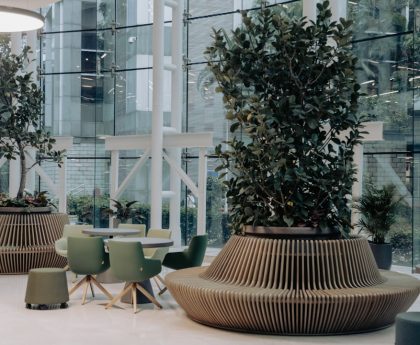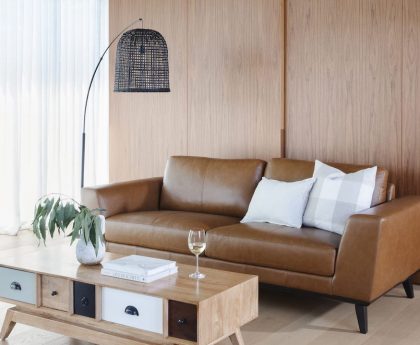When it comes to choosing the right style for your table lamp, there are a few factors to consider. First, think about the overall aesthetic of the room where the lamp will be placed. If you have a modern, minimalist style, you may want to opt for a sleek, simple lamp with clean lines and a neutral color palette. On the other hand, if your space has a more traditional or eclectic vibe, you might consider a lamp with ornate details, a vintage-inspired design, or even a bold pop of color.
Another important consideration is the purpose of the lamp. Are you looking for a statement piece that will serve as a focal point in the room, or do you need a more subtle, functional light source? If you’re looking for a statement piece, you might want to choose a lamp with a unique shape or an eye-catching design. If functionality is your main priority, you’ll want to focus on finding a lamp that provides the right amount of light for reading or working, with a shade that directs the light where you need it most.
In addition to considering the overall style and purpose of the lamp, it’s also important to think about how the lamp will fit in with the rest of your decor. If you have other lighting fixtures in the room, such as overhead lights or wall sconces, you’ll want to choose a table lamp that complements these other sources of light. Similarly, if you have other decorative elements in the room, such as artwork or furniture, you’ll want to choose a lamp that coordinates with these pieces to create a cohesive look.
Finding the Perfect Size
Finding the perfect size table lamp is essential for both aesthetic and functional reasons. When it comes to aesthetics, the size of the lamp should be proportionate to the size of the table or surface it will be placed on. A small lamp on a large table can look lost and insignificant, while a large lamp on a small table can overwhelm the space and look out of place. It’s important to find a balance that feels just right for the space.
From a functional standpoint, the size of the lamp also affects the amount of light it provides. A larger lamp with a wider shade will generally provide more light coverage, making it ideal for larger spaces or for use as a primary light source. On the other hand, a smaller lamp with a narrower shade may be better suited for smaller spaces or for use as an accent light. Consider the specific lighting needs of the space where the lamp will be placed when determining the ideal size.
In addition to considering the size of the table and the lighting needs of the space, it’s also important to think about the overall scale of the room. A large, open-concept space with high ceilings may call for larger, more substantial lamps to fill the visual space, while a smaller, more intimate room may benefit from smaller, more delicate lamps that don’t overpower the space.
Selecting the Right Bulb
Selecting the right bulb for your table lamp is an important step in ensuring that it provides the right amount and quality of light for your needs. When choosing a bulb, consider both its brightness and its color temperature. Brightness is measured in lumens, and different bulbs will provide different levels of brightness. For task lighting, such as reading or working at a desk, you’ll want a bulb with higher lumens to provide ample light. For ambient lighting, such as creating a cozy atmosphere in a living room, you may opt for a bulb with lower lumens.
Color temperature refers to the warmth or coolness of the light produced by the bulb. Bulbs with lower color temperatures (measured in kelvin) produce warm, yellow-toned light that is often associated with cozy, inviting spaces. Bulbs with higher color temperatures produce cooler, bluer-toned light that is often associated with crisp, bright spaces. Consider the mood and atmosphere you want to create in the room when selecting the color temperature of your bulb.
Another factor to consider when selecting a bulb is its energy efficiency and lifespan. LED bulbs are known for their energy efficiency and long lifespan, making them a popular choice for many homeowners. While they may have a higher upfront cost than traditional incandescent bulbs, they can save money in the long run through reduced energy consumption and fewer replacements.
Adding a Pop of Color
Adding a pop of color with your table lamp is a great way to infuse personality and style into your space. Whether you opt for a bold, brightly colored base or a vibrant shade, incorporating color into your lamp can make a big impact on the overall look and feel of the room. If you have a neutral color scheme in your space, a colorful lamp can serve as a focal point and add visual interest. On the other hand, if your space already has plenty of color, a lamp in a complementary hue can tie everything together and create a cohesive look.
When adding a pop of color with your table lamp, consider how it will coordinate with the rest of your decor. You may want to choose a color that complements other elements in the room, such as throw pillows, artwork, or accent furniture. Alternatively, you could use the lamp as an opportunity to introduce an unexpected pop of color that adds an element of surprise and delight to the space.
In addition to considering how the color of the lamp will coordinate with other elements in the room, think about how it will affect the overall mood and atmosphere of the space. Warm colors like reds, oranges, and yellows can create a cozy, inviting feel, while cool colors like blues and greens can evoke a sense of calm and tranquility. Consider how different colors make you feel and choose one that aligns with the mood you want to create in your space.
Incorporating Different Materials
Incorporating different materials into your table lamp can add texture and visual interest to your space. From glass and metal to wood and ceramic, there are countless materials to choose from when selecting a table lamp. Each material has its own unique characteristics and can contribute to the overall look and feel of the room in different ways.
Glass table lamps can add a touch of elegance and sophistication to a space. Whether they feature clear glass bases that allow light to shine through or colored glass that adds a pop of color, glass lamps can create a sense of airiness and lightness in a room. Metal table lamps, on the other hand, can bring an industrial edge or a sleek modern vibe to a space. Whether they feature polished chrome, brushed nickel, or antique brass finishes, metal lamps can make a bold statement and add shine and reflection to a room.
Wood table lamps can bring warmth and natural beauty to a space. Whether they feature smooth, polished wood bases or rustic, textured finishes, wood lamps can add an organic element to a room and create a sense of coziness and comfort. Ceramic table lamps can also add texture and visual interest to a space. Whether they feature glossy finishes in bold colors or matte finishes with intricate patterns, ceramic lamps can add an artisanal touch and create visual intrigue.
When incorporating different materials into your table lamp, consider how they will coordinate with other elements in the room. You may want to choose materials that complement other furniture or decor in the space, or you could use the lamp as an opportunity to introduce an unexpected texture that adds depth and dimension to the room.
Mixing and Matching with Other Lighting

Mixing and matching your table lamps with other lighting fixtures in the room can create layers of light and add depth and dimension to your space. When selecting table lamps that will coexist with other lighting sources such as overhead lights or wall sconces, it’s important to consider how they will work together to provide both ambient and task lighting.
If you have overhead lighting that provides general illumination for the room, consider using table lamps to provide focused task lighting for specific activities such as reading or working at a desk. Positioning table lamps near seating areas or work surfaces can help create cozy nooks within larger spaces and provide targeted illumination where it’s needed most.
In addition to providing task lighting, table lamps can also contribute to the overall ambiance of the room when used in conjunction with other lighting sources. By choosing lamps with shades that diffuse light softly or selecting bulbs with warm color temperatures, you can create a warm and inviting atmosphere that complements other sources of light in the room.
When mixing and matching table lamps with other lighting fixtures in the room, consider how they will coordinate in terms of style and scale. You may want to choose lamps that complement other fixtures in terms of design aesthetic or select lamps that provide visual contrast for added interest. Additionally, consider how different lighting sources will work together to create balanced illumination throughout the space.
Utilizing Table Lamps for Functionality
Table lamps are not only decorative elements but also serve an important functional purpose in providing task lighting for specific activities such as reading, working on a computer, or doing crafts. When utilizing table lamps for functionality, it’s important to consider factors such as placement, height, and adjustability to ensure that they provide optimal illumination for their intended use.
When using table lamps for reading or working at a desk, it’s important to position them at an appropriate height and angle to provide comfortable illumination without causing glare or shadows. Adjustable table lamps with swivel arms or adjustable shades can be particularly useful for directing light exactly where it’s needed and accommodating different tasks and seating positions.
In addition to considering placement and adjustability, it’s also important to think about how multiple table lamps can work together to provide functional lighting throughout a space. In larger rooms or open-concept spaces, using multiple table lamps strategically placed around seating areas or work surfaces can help create well-lit zones for different activities while also contributing to the overall ambiance of the room.
When utilizing table lamps for functionality, consider how they will coordinate with other elements in the room such as furniture and decor. You may want to choose lamps that complement other design elements in terms of style and scale while also providing optimal illumination for their intended use. By carefully considering placement, adjustability, and coordination with other elements in the room, you can ensure that your table lamps not only look great but also serve their functional purpose effectively.




